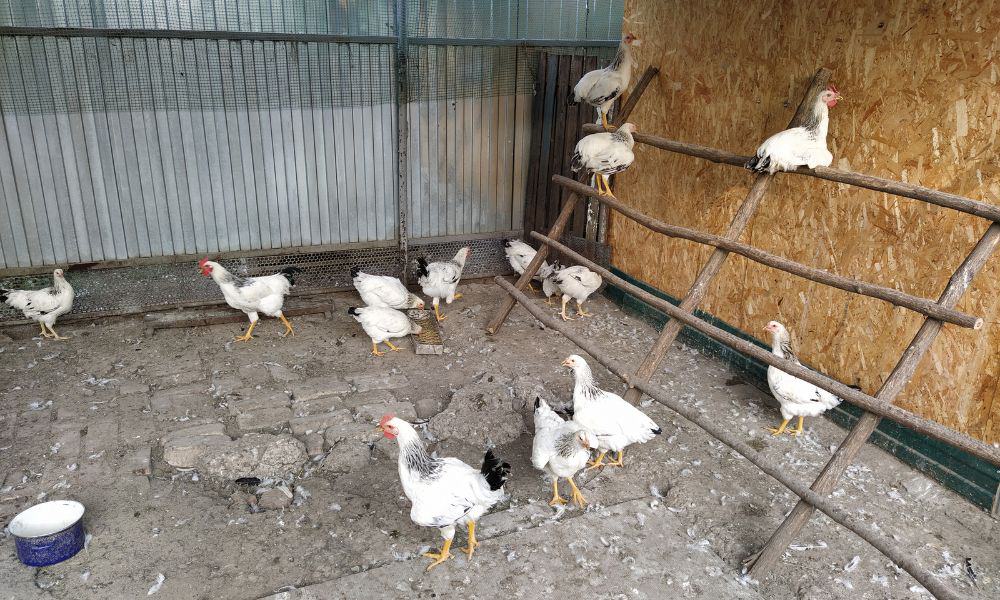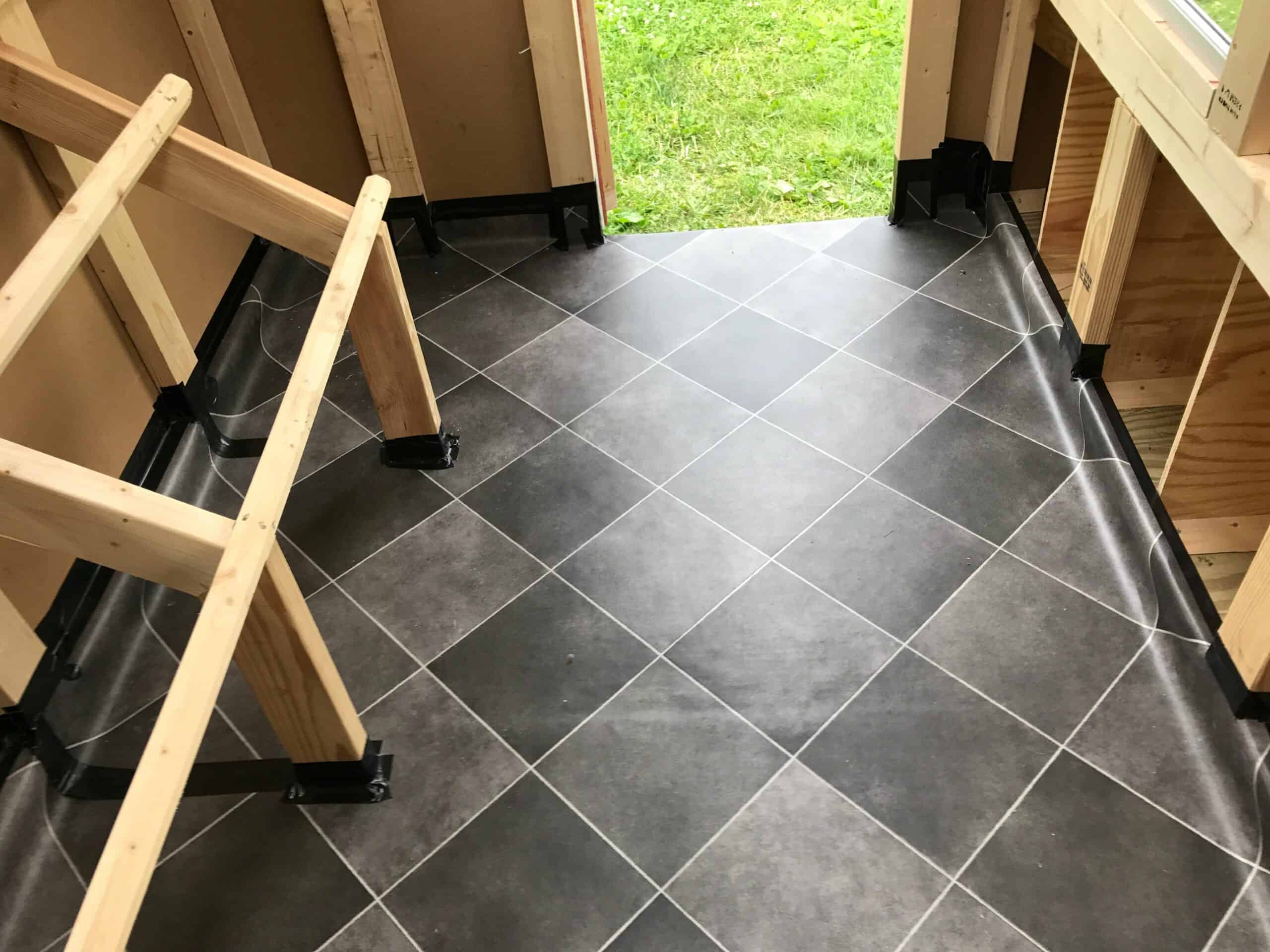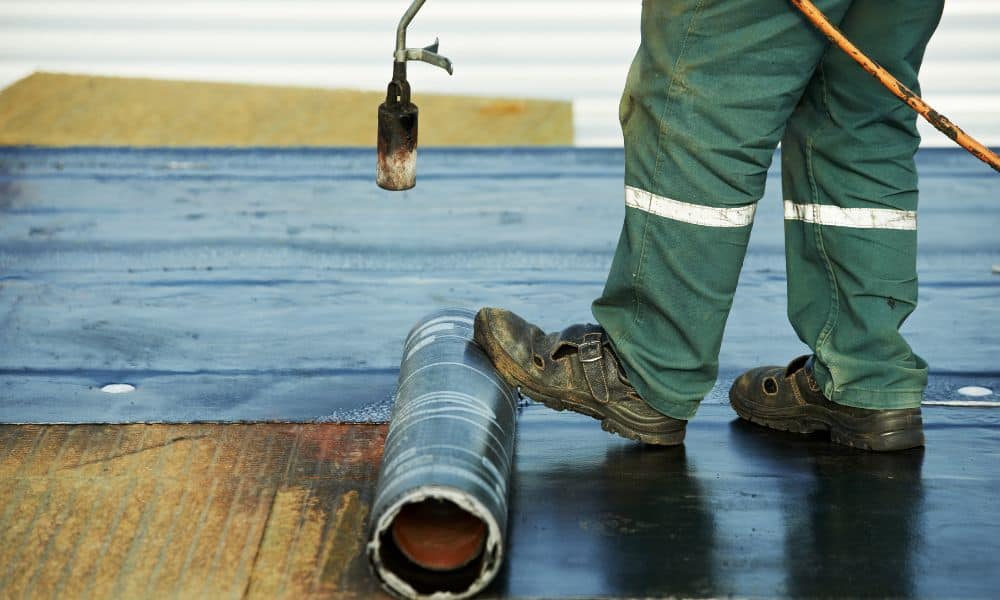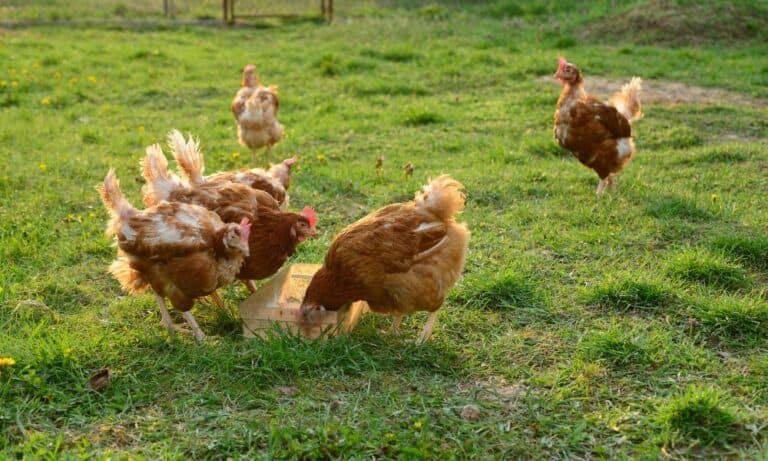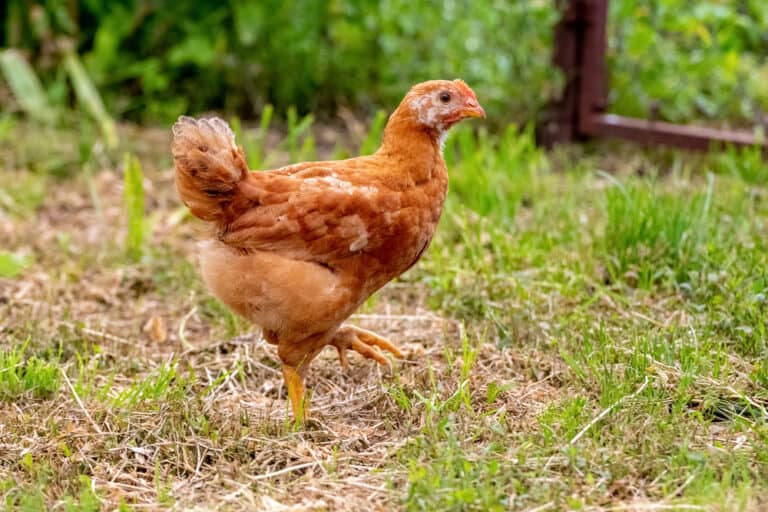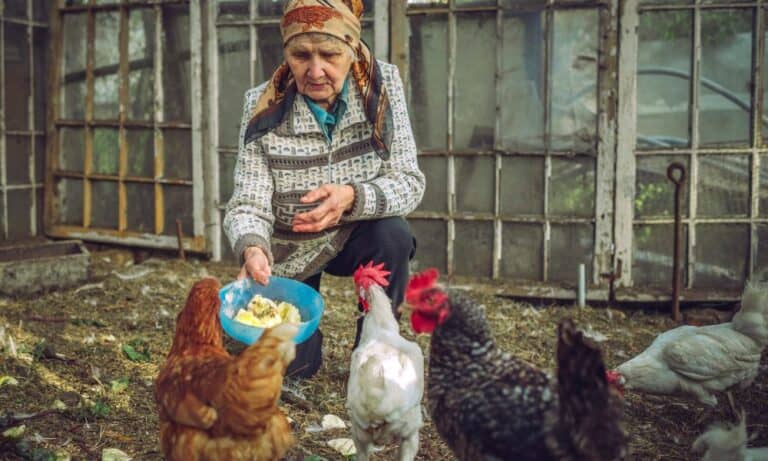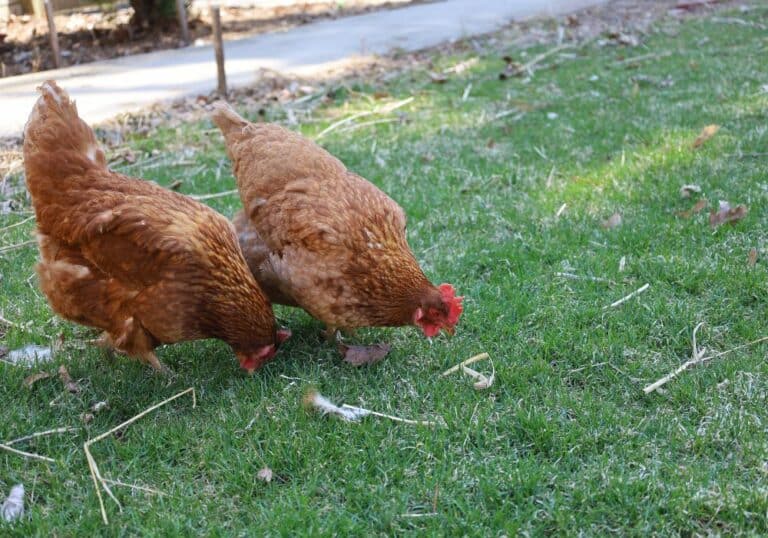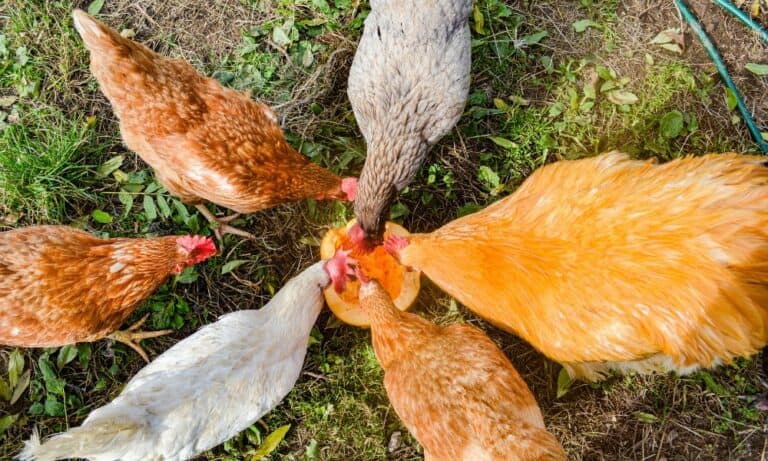If you’re a newbie chicken keeper – or even if you’re an experienced one looking to build a new coop – you might be wondering about which material to use for the chicken coop floor.
There are several options that people commonly use, and each has its own associated advantages and disadvantages. So to help you choose the best one for you, in this post, we discuss 7 chicken coop floor ideas.
What are the requirements of a chicken coop floor?
Before we look at the most common options for chicken coop floors, let’s think a bit about what you need from your coop floor – as this will help you decide which is best for your situation.
Chicken coop floors need to perform several basic functions, including:
- Keeping your chickens dry
- Keeping your chickens warm (insulation)
- Protecting against predators and rodents
In addition, you’ll also want a chicken coop floor that’s as easy as possible to clean, and if you don’t want to have to replace it every year or two, you should also choose something durable.
Finally, most people will also need to consider the cost of the flooring since most of us don’t have unlimited budgets to spend on our chicken coops.
Choosing the material that works best for you will involve weighing up all of these factors, so now let’s have a look at your options.
Best Chicken Coop Floor Materials
1. Concrete
Concrete flooring for chicken coops is among the most popular options, and this is because it offers several strong advantages.
Concrete flooring is extremely easy to clean – all you need to do is sweep out the mess and then hose it down, and you’re good to go. Other than cleaning, concrete also has minimal maintenance requirements, making it one of the easiest floor types to care for.
It’s a very durable material, so once it’s in place, you won’t have to replace it for many years. Furthermore, it’s impenetrable to burrowing animals such as rats, so it will keep them out of your coop and away from your precious ladies.
Another advantage is that concrete can help keep your chickens cool during the hottest months. However, the flip side of this is that it’s very cold to live on concrete when the temperature drops, so you’ll need to provide a thick level of bedding during the winter.
Chickens can also damage their feet on concrete, which may result in them developing sores or more serious conditions – although, with proper bedding, this is not really a problem.
The main downside with concrete is the cost since it can be expensive. You can save some money by doing it yourself, but if you pay a professional to do it for you, it can bump the price right up.
One other downside to consider is the permanence of concrete. If you’re sure you know where you want your coop to be situated, then it can be a good choice. But if you later decide to move your coop, the floor has to stay where it is.
All in all, concrete has a lot going for it, and other than the price and the fact that you can’t move it, the other issues associated with this material are easy to resolve.
Pros
- Easy to clean
- Easy to maintain
- Lasts a long time
- Protects against predators and rodents
- Helps keep chickens cool in summer
Cons
- Expensive
- Can’t be moved
- Can damage chickens’ feet
- Cold in winter
2. Wood
Another popular option for a chicken coop floor is wood, and unlike concrete, this material is kinder on chickens’ feet.
Wood is easier to work with than concrete, so it’s more suitable for making a DIY coop, and it can be much cheaper than concrete too.
When compared with concrete, wood also provides better insulation, so your chickens won’t suffer as much from the cold in winter.
In terms of cleaning, it depends on how you construct your coop – but in general, it is more difficult than concrete since some muck invariably gets stuck between the boards.
One of the main problems with wood is that animals like rats can chew through it and gain access to your coop.
Wood can also rot, but you can mitigate this problem by painting it (although you need to make sure the paint doesn’t peel because chickens will peck at peeling paint, and it’s likely to be toxic).
Overall, wood is another popular option, and although it isn’t as permanent as concrete, it’s relatively easy to look after, is gentler on chickens’ feet and is easier to work with.
Pros
- Can be inexpensive
- Gentle on chicken’s feet
- Easy to work with
- Relatively easy to maintain
Cons
- Wood can rot
- Doesn’t provide as much protection against predators or rodents
- More difficult to clean
3. Plywood
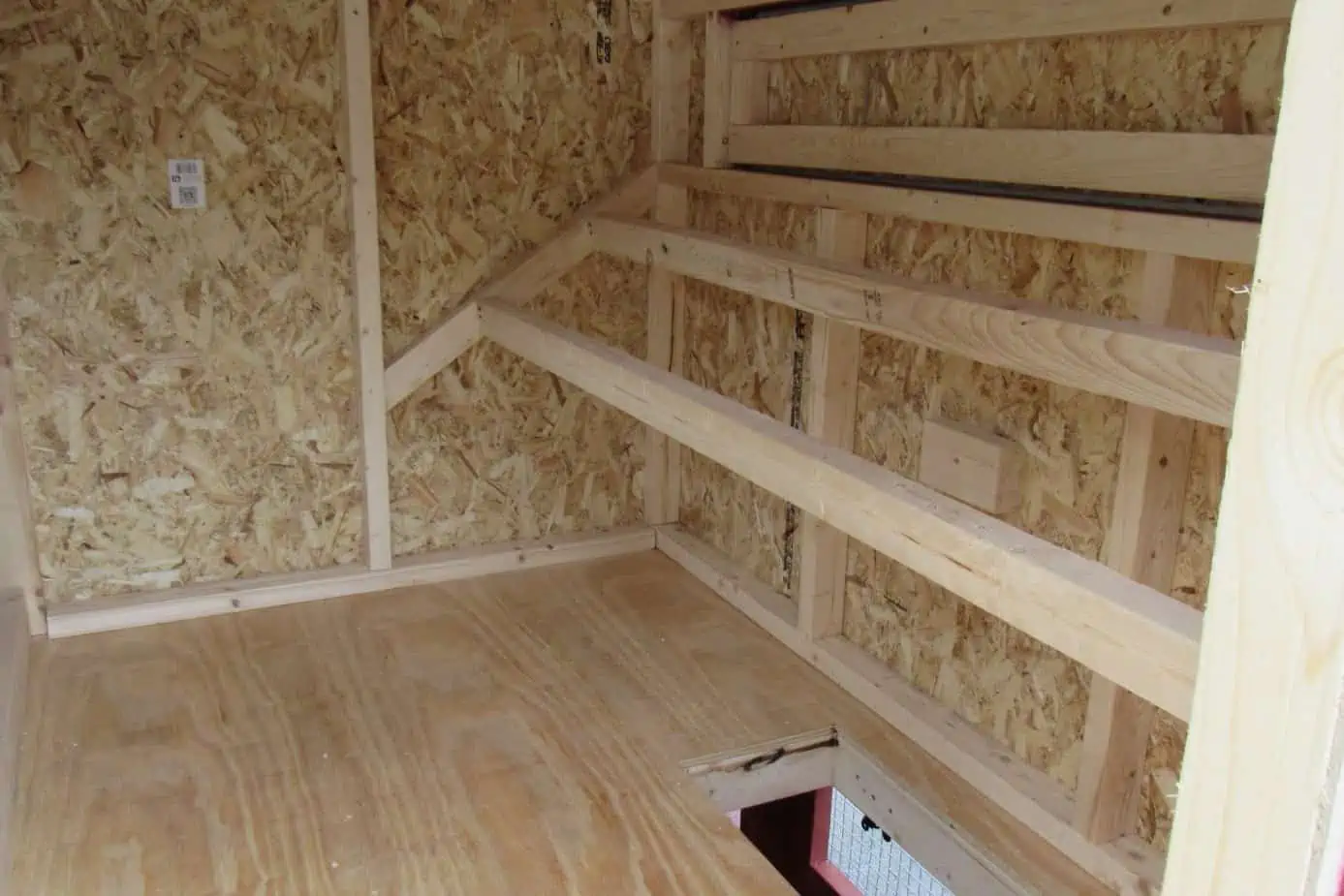
An alternative to wood, plywood has many of the same advantages – as well as one or two others that regular wood doesn’t offer.
Like wood, it’s cheap, accessible and easy to work with, so it’s a great option for anyone looking to make a DIY chicken coop without spending a whole lot of money.
Plywood is also gentle on chickens’ feet and provides good insulation, advantages it shares with planks of wood.
Since it comes in sheets, if you use bedding, it’s easier to clean than planks of wood because there’s nowhere for the muck to get stuck. On the other hand, without bedding, plywood quickly becomes stained and dirty, making it a much less attractive option.
Plywood is also prone to rotting – even more so than regular wood. However, this issue can be minimized by providing enough bedding and ensuring you don’t situate your coop on ground that’s always wet.
It’s also easy for rodents and predators to penetrate, so it might not be suitable in areas where this is a big problem.
In short, plywood, like regular wood, has many advantages – and with bedding, it’s easier to clean than regular wood planks. However, it’s not a durable, long-term solution, and it doesn’t offer your chickens the best level of protection.
Pros
- Accessible and inexpensive
- Easy to work with, ideal for DIYers
- Gentle on chicken’s feet
- Offers good insulation
- Easy to clean when used with bedding
Cons
- Prone to rotting
- Doesn’t offer good protection against predators or rodents
- Gets dirty quickly when not used with bedding
4. Dirt
Not having any flooring can be an option, and this is a solution that also has its associated pros and cons.
This type of floor is the most natural for chickens to walk on, so it won’t damage their feet. It’s also the best for budget-conscious chicken keepers since it’s free. It allows chickens to enjoy natural dust baths too, something they love and that’s important for their health.
However, in rainy weather, it can quickly turn to mud, so you’ll need to make sure pools of water don’t collect in your coop, and it can also get cold in winter, so you’ll need to use plenty of bedding and perhaps a heating system, depending on where you live.
One of the main disadvantages is that placing your chickens directly on the natural floor doesn’t provide any protection against other animals that might try to find their way into the coop, so this might not work in places where rats or other predators or pests are a problem.
Another issue is that this kind of floor can provide a breeding ground for parasites, so you’ll need to make sure your chickens are properly dewormed, and you’ll also have to check their feathers for any parasites that might make their homes there.
Most chicken keepers would agree that a dirt floor can be a good option during certain parts of the year, but during the wetter or colder months, your chickens will probably do better in a coop with a floor made of something else.
Pros
- Natural
- Cheap
- Minimal maintenance
- Easy to clean
- Allows chickens to enjoy dust baths
Cons
- Parasites
- Can flood
- No protection against predators or rodents
5. Vinyl or linoleum
Vinyl and linoleum are two materials that seem very similar – but they have a very important difference. While linoleum is made from natural materials such as wood chips and plant resin, vinyl is synthetic and often contains lead.
This makes it toxic for chickens, and it can also be toxic for you if you eat their eggs – so while linoleum is a possible material to use for your chicken coop floor, vinyl is probably best avoided.
Other than this, these materials are easy to install and easy to maintain, and good-quality versions are tough, durable and resistant to rot.
However, be aware that cheaper versions are unlikely to last very long and may need to be replaced quickly, making this something of a false economy.
One of the biggest advantages of these materials is that they are incredibly easy to clean.
At the same time, if you are considering using vinyl or linoleum, you should opt for rolls rather than tiles. This is because tiles won’t remain in place for very long, and as soon chickens see a corner, they will peck at it until they pull the tile right up.
Another thing to be aware of is that both materials are very slippery, so you need to use plenty of bedding to prevent your birds from slipping over and injuring themselves.
In sum, vinyl is probably best avoided due to its toxicity while linoleum offers several advantages when used correctly and with the proper bedding.
Also, note that some glues used to fix these materials can also be toxic, so you need to pay attention to this too – and using staples to hold the floor down is the preferred option.
Pros
- Easy to clean and maintain
- Easy to fit
- Can be relatively inexpensive
Cons
- Vinyl is toxic
- Slippery and dangerous for chickens when used without bedding
- Chickens will peck up and destroy vinyl or linoleum tiles
6. Rubber matting

Rubber matting is another option to consider, although it works best when laid over something like wood or concrete rather than installed alone.
It provides good insulation, is easy to clean and is very tough and durable. It is also kind on chickens’ feet, and it’s also not slippery, unlike vinyl or linoleum.
However, the main downside is that it can be expensive, so it could be an option if you want something for a small coop, but for larger operations, many people will be unwilling to spend that much money.
Pros
- Tough and durable
- Easy to maintain
- Easy to clean
Cons
- Price
7. Rubber roof coating
A cheaper alternative to rubber matting is rubber roof coating. Like matting, it is tough and durable, and it’s also easy to install – although you need to make sure you do it right or the results will be less than perfect.
This material is simply applied like paint, and once in place, it will last for many years, providing your chickens with a padded, insulated floor surface.
The main concern here is toxicity since it’s not designed for chicken coop floors – so you should do your homework about the ingredients of any product you’re considering before applying it.
Pros
- Inexpensive
- Durable
- Soft and gentle on chicken’s feet
- Easy to apply
Cons
- Potential toxicity
Chicken Coop Floor Materials to Avoid…
Finally, we should point out that there is one common material that people use for chicken coop floors that should be avoided – and that’s wire.
Wire can easily damage chickens’ feet (you wouldn’t want to spend your whole life walking about barefoot on wire, after all), it doesn’t protect against predators and it can also trap poop, making your coop dirty.
Although wire provides good ventilation during the summer, it doesn’t provide protection against the elements in winter and can also be very drafty in windy weather.
Some people still use it because it’s cheap and convenient, but our strong advice is to avoid it and use something else instead.
Concrete or wood are the best options
As we’ve seen, there are several options you can turn to when deciding what to use for a chicken coop floor – but our advice is to use either concrete or wood/plywood in most cases.
This is because these options provide the most advantages and the fewest disadvantages – although in some cases, materials such as plain dirt or linoleum can be good options too.

